
(magma seeping through the mid-ocean ridge
image courtesy of:
http://mrborden.wordpress.com/2012/01/22/sea-floor-spreading-and-the-mid-ocean-ridge/)
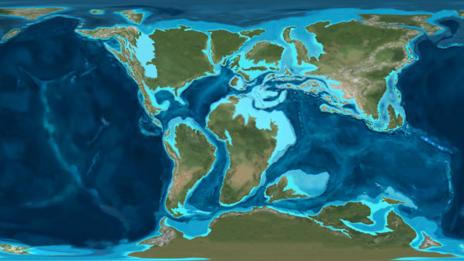
(the light blue represents land submerged during the Cretaceous period
image courtesy of: http://www.bbc.co.uk/nature/history_of_the_earth/Cretaceous)
Cretaceous is Latin for chalk, which is why the Cliffs are white. Chalk, limestone, is a biological sedimentary rock. Lime mud (from skeletons of plankton, the Coccolithophores) accumulated on the sea floor as more and more sediment built up.
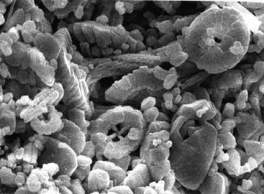
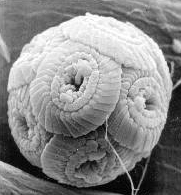
(magnified look at chalk coccoliths, discs (a single coccolith)
that form the spherical skeleton of
Coccolithophores)
Images courtesy of:
As the sedimentary rock deposited in layers called strata, the sea floor subsided and the Cliffs were uplifted. The heat and pressure hardened, or lithified, the rock creating what we see of the Cliffs today.
http://en.wikipedia.org/wiki/White_Cliffs_of_Dover)
The White Cliffs contain fossils that range from shark's teeth and many types of sponges to brain corals. The Cliffs of Dover are great for palaeontologists to study fossils. Much of museum collections were established during the Victorian era as scientific study blossomed. Additionally, there was demand for chalk during the industrial revolution in the 19th Century. Chalk is ideal for holding fossils because the rock is hard enough to preserve them in their three dimensional state, but soft enough for palaeontologists to expose and collect.
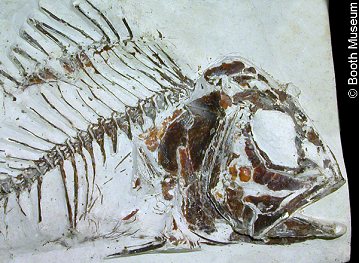
(chalk fish)
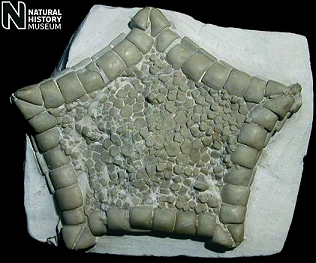
(chalk starfish)
Images courtesy of:
http://www.discoveringfossils.co.uk/chalk_formation_fossils.htm
Sources:
http://en.wikipedia.org/wiki/White_Cliffs_of_Dover
http://www.discoveringfossils.co.uk/chalk_formation_fossils.htm
http://en.wikipedia.org/wiki/Cretaceous
http://clasfaculty.ucdenver.edu/callen/1202/Battle/Build/PlateTectonics/PlateTectonics.html
http://clasfaculty.ucdenver.edu/callen/1202/Battle/Build/EarthMaterials/EarthMaterials.html
http://www.bbc.co.uk/england/sevenwonders/southeast/white_cliffs/
http://www.dover-kent.co.uk/places/white_cliffs.htm
